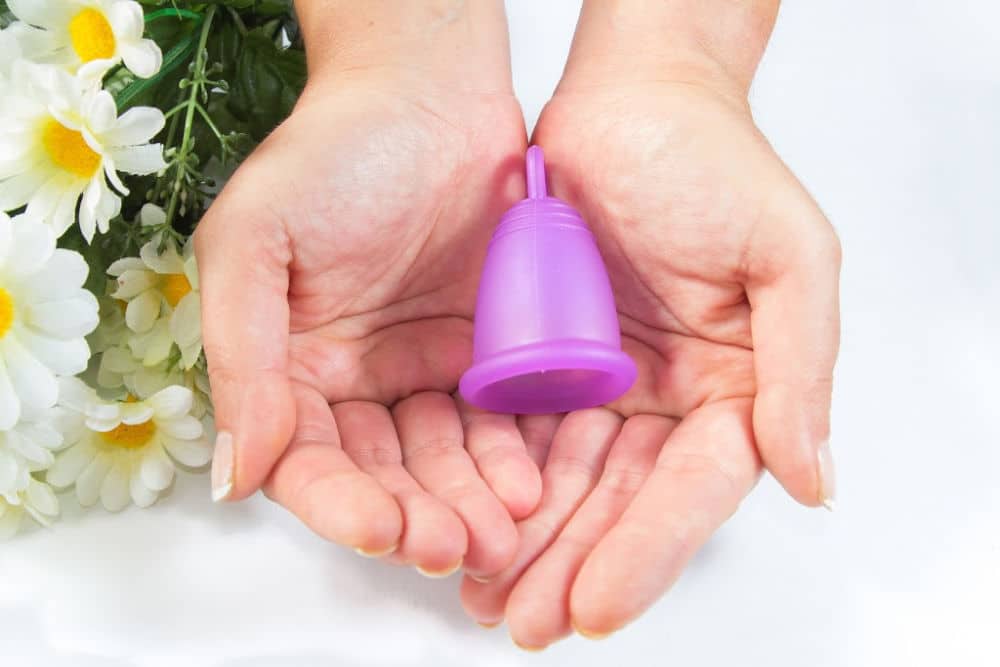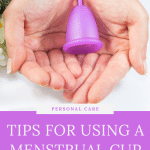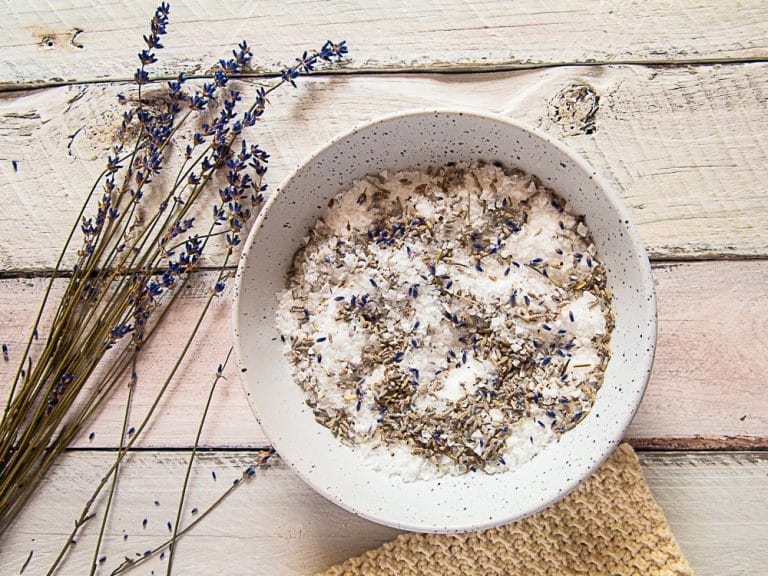The Modern Period – Tips on How to Use a Menstrual Cup
This website may earn commissions from purchases made through links in this post.
A bit squeamish when it comes to using a menstrual cup? Here are some tips on how to use a menstrual cup correctly and comfortably.

It would seem that menstrual cups are a recent fad – a new product that’s only just making its way from crunchy, alternate users into mainstream use.
While the use of menstrual cups may seem new, they have actually been around since the 1930s, about as long as the tampon.
Why aren’t they mainstream?
I guess the fact that it’s reusable and lasts up to 10 years is not as good a ‘business model’ as disposable products.
But are reusable sanitary products sending us back to the dark ages of rags and bad hygiene?
Or are menstrual cups a better way of dealing with your monthly menses?
Made from a soft medical grade silicone, menstrual cups are very modern, clean, convenient and a far cry from washing rags.
While it can be hard to get your mind around the ick-factor of dealing with your period on a more intimate level, you may find yourself never going back to the costly (both to the budget and the environment) disposable product.
According to a study on the use of menstrual cups, published in the Canadian Family Physician Journal, 91% of women who tried a cup would continue to use the cup and recommend it to others.
And the reason an overwhelming majority of those who try a cup prefer it is because of it’s many benefits over its disposable sisters.
I covered all the benefits in the article on menstrual cups, so I won’t repeat them here. But check out the article if you’re new to menstrual cups or you’re on the fence about trying them.
Menstrual Cup Tips
Like anything new, it can take some time and practice before you’re a Master Jedi cup user. Here are some tips that will help you become a pro in no time.
When is a menstrual cup NOT the right option?
If you have medical reasons not to use tampons, seek the advice of a doctor or gynaecologist before using a cup. Other reasons why a cup might not be right for you is if you have prolapses or fibroids or use an IUD or Nuvaring. Check with your doctor or gynaecologist first.
Finding the right Cup
I use and prefer the Mooncup*, but there are lots of different cup brands on the market these days.
We are all different sizes and shapes, so one brand of cup may suit you better than another brand.
With so many sizes, shapes and brand of cup on the market, how do you know which one is right for you?
You can take a quiz! Here are two great resources to help you choose a cup:
One thing to consider is your cervix height.
Your cervix height can help determine which brand of cup is right for you. Juju for instance – an Australian brand – has different sizes depending on cervix height.
Your cervix moves during your cycle, but generally speaking, if you have a high cervix (hard to reach or cannot be reached at all), a longer cup is best for you. If you have a low cervix (sits just inside your vagina about an inch or so), a shorter cup may be best. If you have an average cervix, most menstrual cups are good to use but there are other things to consider as well, as the quiz above explains. Check out this article on finding your cervix height.
Most brands of cup come in two sizes – check the sizing chart on your chosen cup’s website and get the size that’s right for you.
When You First Start Using a Menstrual Cup
Like anything new, it might take a bit of time to get used to using a cup. Remember the first time you used tampons? It took time and practice before using them became second nature.
Cups come with a stem for easy removal. The most important thing when first using your cup is to keep trimming the stem until you can’t feel it anymore and the cup is comfortable.
You should not be able to feel the stem rubbing or poking into you in any way. If you can, you need to trim the stem it further. Keep trying it and trimming the stem until it feels right.
I ended up cutting off the stem altogether – that’s just what ended up working best for me. Unlike a tampon, the cup is meant to be worn low in the vagina.
Inserting the Cup
When it comes to inserting for the first time, it may be easier to rinse it first or use lubrication so it’s not going in dry. Relax your muscles, fold the cup up to fit, try different positions to insert (ie foot on the bath). Once you’re used to it, it will be as easy as using a tampon.
Check out this video on 9 ways to fold your cup. Don’t over-complicate it though, choose one fold that works best for you.
Once inserted, make sure the cup has completely opened. You should feel a slight ‘pop’ as it opens up. You can check by giving the cup a small twist or squeeze to squeeze the fold open, or you can run your finger around it to ensure it has created a seal.
Removing the Cup
To remove, give it a ‘push’ if you need to, squeeze the base to break the seal and then gently pull. What feels weird to start with becomes super easy with practice.
The cup is meant to create a seal to stop leakage. You need to break that seal before removing, otherwise, it’s not going to be comfortable. It can be easier to remove by squeezing the bottom to break the seal and then remove the cup semi-squashed.
If your cup leaks it could be because it’s inserted too high up, it’s full, you have a retroverted uterus or your cervix has moved. If you’re nervous about leakage, use with a pad until you’re confident using your cup and you’ve got it in the right position for your body shape.
For backup, these period-proof underpants are a great, low-waste option. For more information, check out this article on period underwear.
Emptying The Cup
One of the main objections to using a menstrual cup is the idea of changing/emptying it in a public toilet. However, because the cup can be used for up to 8 – 12 hours, it’s unlikely you’ll have to change it in a public place unless you have very heavy periods.
In the case you do have to empty your cup while out and about, you don’t need to wash it. You can simply wipe it with a bit of loo paper and reinsert and wash your cup next time when you get home. Just make sure to clean your hands before and after emptying your cup (that goes at home as well and of course, using a tampon).
If you like, you can take a bottle of water into the toilet to rinse your cup or use fragrance-free hand wipes, but a quick wipe with loo paper is sufficient.
Cleaning Your Menstrual Cup
To clean during use, rinse in warm water and wash with a fragrance-free, oil-free soap, then rinse the soap off thoroughly. Warm water is best because it’s way more comfortable than reinserting a cold cup. This can be conveniently done in the shower.
Between uses, sterilize your cup. You can boil it for 3-5 minutes or you can use the sterilizing tablets you buy in the supermarket for baby bottles. Rinse well after sterilizing and store dry in your cotton storage bag.
If your cup becomes discoloured, you can clean it with bicarb soda if you wish. Just wipe over with a damp cloth or soft brush.
At home, it can be convenient and easy to change your cup during your morning or evening shower.
It’s normal to dismiss something new and different, especially when it comes to dealing with our bodily fluids. But the many benefits of using a cup make it worthwhile to give it a go.
What are your tips and tricks for using a menstrual cup?







Great advice! I started using a menstrual cup after having children, because tampons just didn’t seem comfortable for me anymore. Turns out my cervix is LOW during my period, but quite high at other times of the month. Through trial and error, I found a Fleurcup to be my perfect fit, although I’ve also used a Ladycup and an eBay cheapie (which was surprisingly good).
Menstrual cups have saved me a lot of money these last few years. At 44yrs old I’m peri menopausal, and my cycle consists of 18-32 days of bleeding followed by a 14 day break. My old favourite Tampax would have put quite a dent in the household budget if I hadn’t discovered the menstrual cup.
My best tip is to try different folds to find one that works for you. My first cup, (the Ladycup) came with instructions that only showed the C fold, and there was no way that was working for me! I Googled “Menstrual Cup Folds” and kept trying different ones until I had a winner (I use the 7 fold). Also, a tiny dab of lubricant on the tip of the folded cup makes insertion easier, especially towards the end of my period.
Hi Maggie. Thanks for the tip on the folds. I couldn’t believe there were so many ways to fold them!
What a helpful article. My friend runs this helpful site (http://www.itcouldbebetter.com.au), and between that and your article I may have just been convinced…
These are good tips. My first time using a cup (Daisycup brand), I found that the punch down fold or the 7 fold worked the best… with a little bit of lube. It seemed like making a point with the cup allowed me to ease it in a little bit.
Whoever invented cups is genius. My Daisycup has been a blessing.
Thanks for your tips. It is a genius invention!